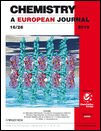The direct evaluation of dissociation constants (KD) from the variation of saturation transfer difference (STD) NMR spectroscopy values with the receptor-ligand ratio is not feasible due to the complex dependence of STD intensities on the spectral properties of the observed signals. Indirect evaluation, by competition experiments, allows the determination of KD, as long as a ligand of known affinity is available for the protein under study. Herein, we present a novel protocol based on STD NMR spectroscopy for the direct measurements of receptor-ligand dissociation constants (KD) from single-ligand titration experiments. The influence of several experimental factors on STD values has been studied in detail, confirming the marked impact on standard determinations of protein-ligand affinities by STD NMR spectroscopy. These factors, namely, STD saturation time, ligand residence time in the complex, and the intensity of the signal, affect the accumulation of saturation in the free ligand by processes closely related to fast protein-ligand rebinding and longitudinal relaxation of the ligand signals. The proposed method avoids the dependence of the magnitudes of ligand STD signals at a given saturation time on spurious factors by constructing the binding isotherms using the initial growth rates of the STD amplification factors, in a similar way to the use of NOE growing rates to estimate cross relaxation rates for distance evaluations. Herein, it is demonstrated that the effects of these factors are cancelled out by analyzing the protein-ligand association curve using STD values at the limit of zero saturation time, when virtually no ligand rebinding or relaxation takes place. The approach is validated for two well-studied protein-ligand systems: the binding of the saccharides GlcNAc and GlcNAcB1,4GlcNAc (chitobiose) to the wheat germ agglutinin (WGA) lectin, and the interaction of the amino acid L-tryptophan to bovine serum albumin (BSA). In all cases, the experimental KD measured under different experimental conditions converged to the thermodynamic values. The proposed protocol allows accurate determinations of protein-ligand dissociation constants, extending the applicability of the STD NMR spectroscopy for affinity measurements, which is of particular relevance for those proteins for which a ligand of known affinity is not available.
Headline Papers
Ligand-Receptor Binding Affinities from Saturation Transfer Difference (STD) NMR Spectroscopy: The Binding Isotherm of STD Initial Growth Rates
Jesús Angulo, Pedro M. Enríquez-Navas, Pedro M. Nieto
Chem. Eur. J., 2010, Vol. 16, 7803-7812IIQ



 Español
Español